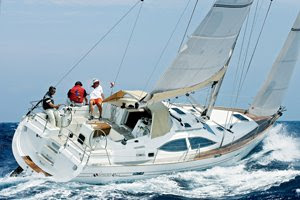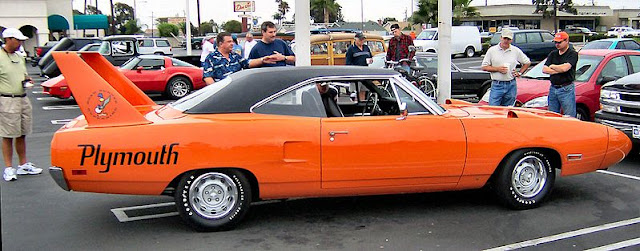
Groupe Beneteau is the largest sailboat manufacturer in the world. It comprises four separate companies—Beneteau, Jeanneau, Lagoon, and CNB—that operate independently but share economies of scale. At first glance, Beneteau and Jeanneau may appear to be competing for the same buyers, but in reality each line is designed to fill wide (and separate) swaths in the marketplace. Jeanneau has had great success with distinctively styled deck-saloon boats, while Beneteau has established a strong foothold with more traditionally styled cruisers and racer/cruisers. So when I approached the new Beneteau 523 on the docks in Miami and was struck (yet again) by the fact that the majority of new sailboat designs are evolutionary rather than revolutionary, I wasn’t all that surprised. Measuring slightly over 52 feet, the 523 is part of Beneteau’s Flagship line and represents a natural progression up from Beneteau’s smaller models.
On deck
My first impression was that the boat’s proportions seemed right. That’s no small accomplishment with 16-foot beam to accommodate a spacious interior and freeboard tall enough to provide considerable headroom. The 523’s appearance benefits from its low-slung coachroof. The cockpit is both functional and comfortable. Dual helm stations are separated from the cockpit by molded-in steering pods that allow the helmsman to have a comfortable seat, access to all controls, and excellent visibility on either tack. Meantime, crew in the cockpit can stretch out on 6-foot-long teak-trimmed seats or have lunch at the sturdy (permanent) teak cockpit table with fold-down leaves. The split helms provide easy access to the walk-through transom and swim platform below. The cockpit also contains several large lockers that can easily swallow dock lines and fenders.
Belowdecks
The 523 will appeal to anyone who longs to trade up from a smaller boat. Going down the companionway steps brings you into a bright, airy saloon that would be a perfect place to spend a rainy afternoon at anchor. The interior layout is noteworthy for the intelligent use of the available space. The linear galley running along the starboard side of the saloon offers considerable counter and stowage space. The forward-facing nav station at the base of the companionway steps has a good-size chart table and a comfortable contoured seat. The dining table is offset to port and has room for six to eat comfortably. The long, curved seat that runs along the outboard edge of the settee will make an excellent seaberth (on the starboard tack); a bench seat set amidships has fiddled counter space and a bank of drawers built into the backrest. This obviously provides good stowage for cutlery and the like and makes a sturdy (and necessary) brace point for moving around in the saloon.
I was particularly impressed with the master cabin forward. It has an ensuite head and a 6-foot, 6-inch-long walk-around double berth with a high-density-foam mattress. The cabin is furnished with two large hanging lockers, several cabinets with vented doors, a dressing table, a bench seat, and two drawers under the berth. The two guest cabins aft are smaller (each has a double berth and a small hanging locker), and each also has an ensuite head.
Under way
The breeze never topped 10 knots for our test off Miami Beach—not ideal to determine top-end speed or to see how a boat performs in heavier weather, but enough to determine basic characteristics and light-air performance. Cracked off a bit from hard on the breeze and with the sails trimmed for maximum power, we were able to get boatspeed to nudge 5 knots in the zephyrs. No doubt this results from a high sail area-displacement ratio—18.7—and a D/L ratio of a surprisingly low 132. This is a light boat for its size, and it was devoid of cruising gear. The downside to this nimble light-air performance will likely be a need to reef early when the wind picks up. We tacked through 95 degrees. The helm was light and responsive, and the boat cut quietly through the water. The helmsman can easily trim the jib (with the push of a button) from behind the wheel, but another crewmember (or a push of the autopilot and several steps forward) will be needed to trim the mainsail, which runs to a cabintop winch.
The boat was well-mannered under power. Backing out of our tight slip in the marina was effortless thanks to the optional bow thruster. The boat stopped quickly and pivoted predictably when we needed it to. Top speed under power was 7.6 knots, and excellent insulation kept engine noise to a minimum.
Conclusion
The 523 shows that a new boat design doesn’t have to be revolutionary to be effective. Its lines are pleasing, traditional, and nonthreatening. The accommodation plan makes excellent use of the available interior volume (especially in the master cabin)—not by reconfiguring a traditional layout, but rather by skillfully executing subtle refinements and enhancements. The boat is manageable enough for a cruising couple and big enough to accommodate three cruising couples. Its long waterline and light displacement promise good speed potential. If you’re looking for more interior room and don’t mind only having one seaberth in the saloon, the 523 is well worth a look.




Thanks Dan. Have you seen Beneteau’s Dock & Go docking system in action yet? I’ll be posting a video of the Sense 50 turning tight circles and powering sideways into a tight space shortly.
Beneteau makes some beautiful boats, this one is no exception. Thanks for the great writeup, Bill.
-Dan
Webmaster @ Sea Eagle Boats